The Complete Encyclopedia of Television Programs, 1947-1976
By Vincent Terrace
First Published 1976 in Two Volumes
Published by A. S. Barnes and Co., Inc.
Vol. 1: 450 Pages / Vol. 2: 464 Pages
Vincent Terrace has made a career out of writing encyclopedic tomes about television and radio, including titles such as Encyclopedia of Television: Series, Pilots and Specials, 1937-1973, Radios Golden Years: The Encyclopedia of Radio Programs, 1930-1960 and Sitcom Factfinder, 1948-1984: Over 9,700 Details from 168 Television Shows. According to the front flap, The Complete Encyclopedia of Television Programs, 1947-1976 was the first encyclopedia of television. It also declares that “Terrace has, through his encyclopedic knowledge of the medium and extensive research, [has] written an indispensable, fact-embedded history of television.” The back flap explains that the encyclopedia “is sure to provide a nostalgic backward glance into America’s past — the programs and the personalities that shaped more than a quarter century of television broadcasting.” And at a cost of just $29.95 for both hardcover volumes.
The encyclopedia covers roughly 3,000 programs (Volume 1 covers titles A through K and Volume 2 titles L through Z) and includes over 170 black-and-white photographs. For each program, Terrace gives the genre it falls into, a brief summary, the cast and broadcast information. Here, for example, is the entry for The Baileys of Balboa:
Comedy. Background: Bailey’s Landing, Balboa Beach, California. The story of the bickering relationship between two men: Sam Bailey, the captain of a noisy and decrepit character boat, the Island Princess, and his objecting neighbor, Cecil Wyntoon, the commodore of the high-class Balboa Yachting Club.
CAST
Sam Bailey Paul Ford
Cecil Wyntoon John Dehner
Barbara Bailey, Sam’s daughter Judy Carne
Jim Wyntoon, Cecil’s son Les Brown, Jr.
Buck Singleton, Sam’s shipmate Sterling HollowayTHE BAILEYS OF BALBOA–30 minutes–CBS–September 24, 1964 – March 29, 1965.
Summaries vary in length from a few words to several paragraphs. The summary for I Dream of Jeannie is one of the longer ones, running for seven paragraphs. The summary for Star Stage, an NBC anthology that ran from 1954-1955, is two words: Dramatic presentations. For many anthologies, as well as movie series like The ABC Movie of the Week Terrace provides a handful of examples of episodes, each complete with their own cast lists.
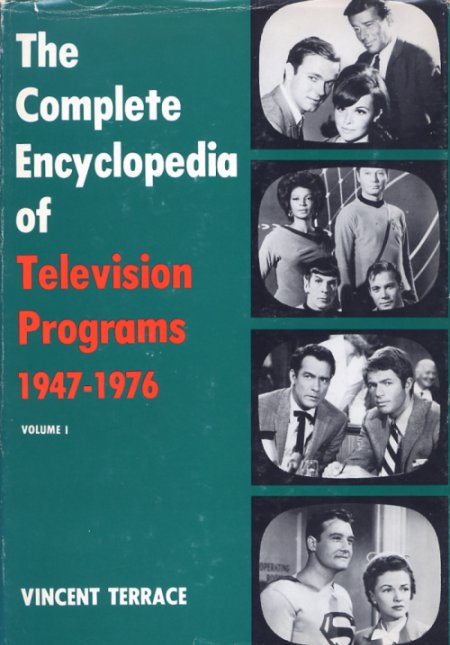
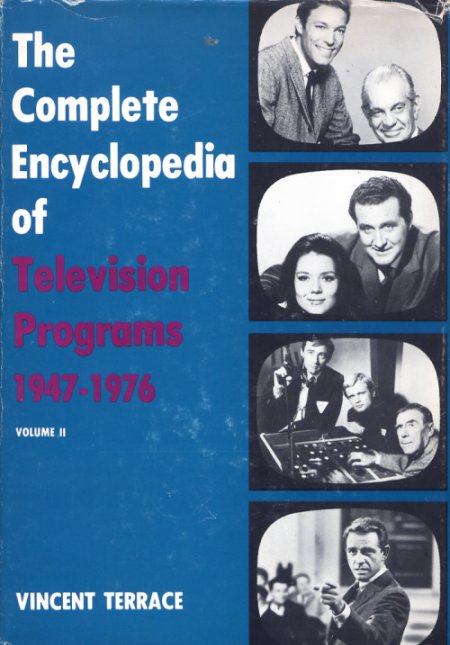
In terms of sheer informational value, The Complete Encyclopedia of Television Programs, 1947-1976 leaves a lot to be desired. Popular, well-known shows often (but not always) have longer summaries than more obscure programs. The summary for The Flying Nun is three paragraphs long while the summary for The New Land is one sentence. On the other hand, the summary for The New People is longer than the summary for Gilligan’s Island.
Format-wise, the two narrow columns on each page is a bit frustrating but you get used to it. There is no index of any sort but it is pretty easy to flip through either volume looking for a particular show. If this truly was the first television encyclopedia, I’m sure it was well-received by historians, academics and television fans alike. Today, however, I rarely find it useful and much prefer The Complete Directory to Prime Time Network and Cable TV Shows, 1946-Present.
A new work by Terrace, a four-volume paperback set titled Encyclopedia of Television Shows, 1925 through 2007, was published in 2008. I haven’t had a chance to look through it but I’d be interested to know if Terrace updated his entries for programs from The Complete Encyclopedia of Television Programs, 1947-1976. Here‘s its page at McFarland’s website.

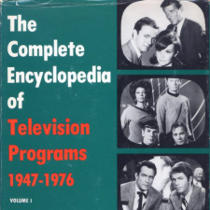
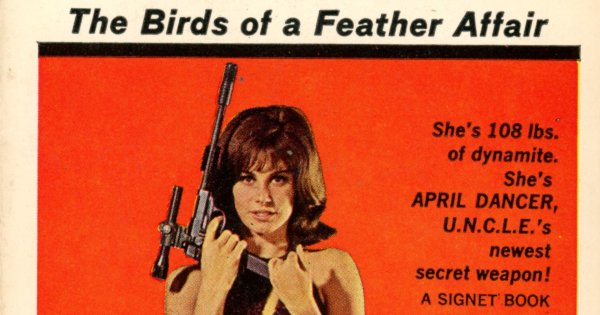
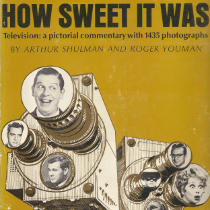
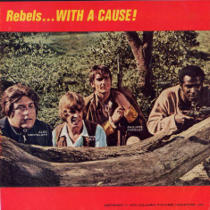



Vincent Terrace is a great researcher, but most of the information in those books (which I initially embraced and read EXTENSIVELY whenever I was at the Monmouth County Library in Shrewsbury and Brookdale Community College in Lincroft [both volumes were, and still are, on their reference shelves]) had numerous errors. For example, in the “I DREAM OF JEANNIE” entry, he identified Jeannie’s dog as “Gin Gin”; it was “DJINN-DJINN”. And he listed Micahel Ansara as a “regular cast member”, even though he appeared just three times during the entire series’ run- and ONLY ONCE as “The Blue Djinn” {“Happy Anniversary”, 9/12/66}, as well as Bob Hastings, even though it was his sole guest appearance as “Homer Banks” in “Have You Heard the One About the Used Car Salesman?” [11/4/68]. Besides, how did he know for sure that Jeannie and Tony first met on Saturday, September 18, 1965 [which also happened to be the show’s premiere date?]. The series was supposed to be “timeless”: no establishing date was ever mentioned. In “THE TWILIGHT ZONE”, Terrace identified the episode “A World Of His Own” [7/1/60], with Keenan Wynn, as “The Tape Recorder”, simply because he didn’t know what the title was {titles weren’t flashed on screen until the second season}. I could list more examples, but you get the idea.
I’m quite sure Mr. Terrace has updated his information for his 2008 “Encyclopedia of Television Shows- 1925 through 2007”, but HOW accurate the new entries are, I don’t know.
I bought this book when I was about 10? and I still have it 30 years later though it is dog eared, stained, written in and the front cover is missing. My edition goes to 1979. I need to get another copy!
At the time I bought it at a Walden Books at a mall in surburbia Denver, I was in heaven! This and “Fantastic Television” by Gary Gerani were a HUGE influence on my TV viewing.
Didn’t know the book had errors but when compiling a massive volume like this I can forgive…
Klaus, I had read that Terrace released an updated edition of that The Complete Encyclopedia of Television Programs in 1979. I’ve also seen reference to an edition that covered 1947-1973 but don’t know if it actually exists or not. I know he also wrote a book that covered 1970-1980 exclusively, as well as three-volume work that also included pilots and specials and covered 1937-1984. He may have updated that one later in the 1980s.
As for mistakes and errors, I’ve never noticed any, but I’ve also never read the two volumes cover to cover. But you’re going to find errors in any television encyclopedia. Hopefully as they were brought to his attention, Terrance corrected them as he released new editions.
“The Complete Encyclopedia of Television Programs” is a decent reference, but for looking up an obscure fact or background for the TV-related articles I write for a website, my hand always goes first to Tim Brooks and Earle Marsh’s “Complete Directory to Prime Time Network and Cable TV Shows.” I consider it the gold standard of television information–though Terrace’s book is certainly welcome. The more data, the better.
…and, Brooks and Marsh have always welcomed readers’ corrections over the years. After they verify the information, they often credit those individuals who’ve contributed the most “addendum” in the current edition of their book, on their acknowledgements page.
At the risk of sounding as if I’m “blowing my own horn”, I can honestly say that I helped correct a misconception about their entry on “THE GUNS OF WILL SONNETT”, several years ago. Originally, Brooks and Marsh assumed there was no “official” ending of the series {“They never found James..”}- but there WAS, which was telecast as the last episode of the series in September 1969, which was supposed to convince ABC to renew the series in a slightly different format (Will and Jeff Sonnett not only FOUND their long-lost relative, they joined him in becoming “the law” in a small town), but they passed on the idea. Even producer Aaron Spelling had forgotten how his own series had ended, quoting the ending Brooks and Marsh originally described, in his own autobiography!
Terrace HAS corrected several entries in his two-volume “Encyclopedia” over the years, but how much information has yet to be rewritten [does he still believe Jackie Gleason’s “THE LIFE OF RILEY” aired on “DuMont” in the 1949-’50 season, instead of NBC, where it originally appeared?].
I remember having a book like this when I was in my twenties but don’t really remember the name of it and the layout of the entries was different; the lay out had the name of the show, type of show, network, days and times it was on (including if it were moved around the schedule), all the people in it and when they were on a show (season they started on show-season they left show.
I remember the book had shows upto I think 1990.
You probably had Brooks & Marsh’s book, ‘Cee Jay’- possibly the fourth edition [they usually update their book about every three to four years]. Terrace’s book had a layout of title, type of show, brief plot description and/or background, cast credits, some production personnel, the title (again), length of program, network [if any], and airdates.
I can vouch for the questionable accuracy of Terrace’s books. On “The Benny Hill Show,” for example (as mentioned in his “Television 1970-1980” and 1974-84 TV show encyclopedia), he had a long list of what he passed off as “regular cast members,” most of whom only appeared in one or two of his original specials as aired in Britain in the period up to 1980. And then he got some names flat-out wrong; for example, he mentioned a “Jennie Lee Rich” as one of the “regulars.” There was and is no such actress working in Britain by that name – however, one of the semi-regulars of the show on and off over its 20 years (1969-89) at Thames TV was Jenny Lee-Wright (whom Terrace also mentioned). He also erroneously cited Jackie Wright (the little bald and aging Irishman whom Benny repeatedly slapped on the head) as “Hill’s Straight Man,” when that honorific actually applied to Henry McGee and (in Hill’s first five years with Thames) Nicholas Parsons.